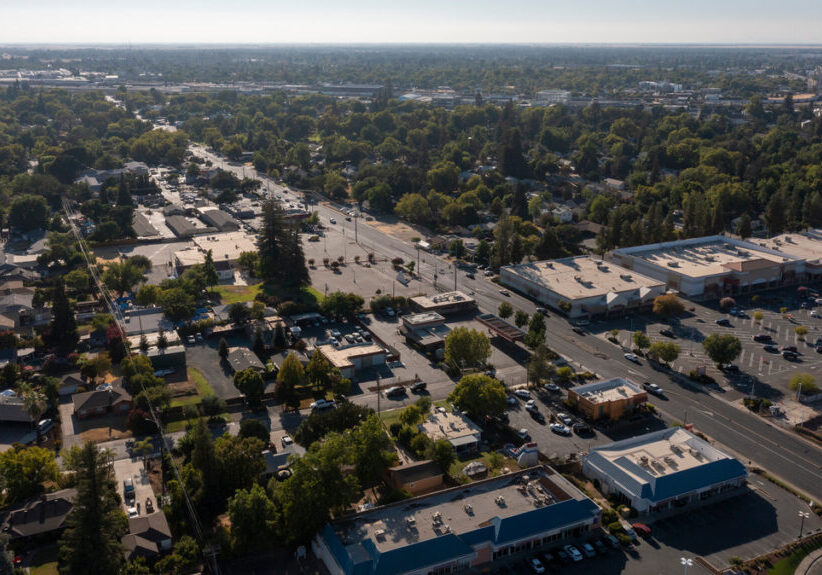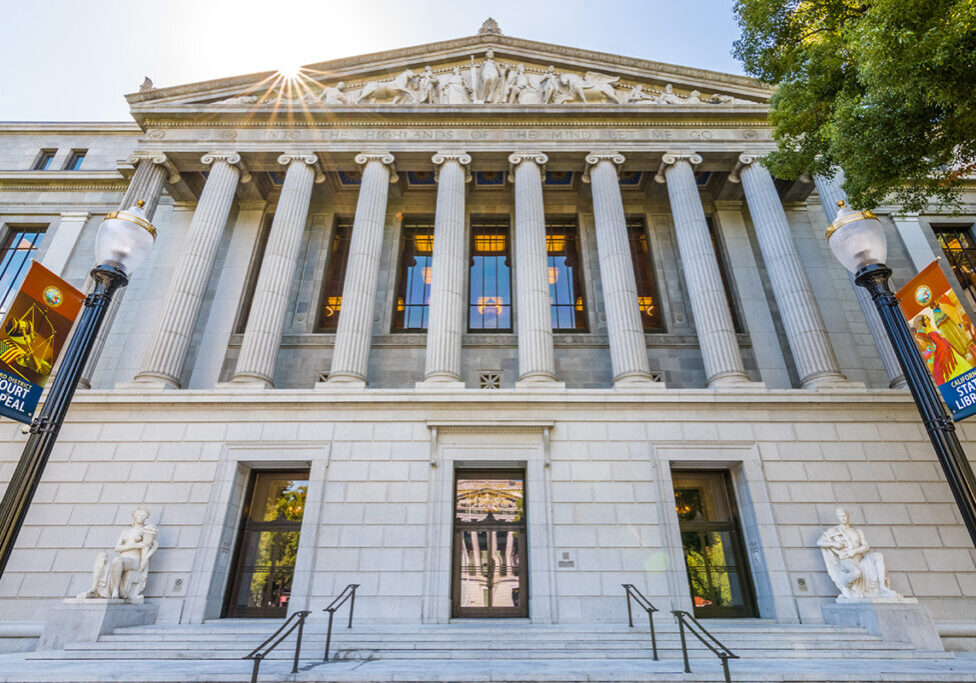Holiday shopping season grows increasingly more frantic as time runs short for people to buy gifts for friends and family. The stress leads to people showing less patience on the road, in stores, and in the parking lots around them. Inevitably, parking lot injuries and accidents happen, and someone is liable for them. But while such accidents make for bigger headlines in the days leading up to Christmas, these dangers are present year-round. One out of every five auto accidents happen in parking lots. Distracted pedestrians and plenty of moving vehicles all contribute to hundreds of deaths every year.
For many accidents on the open road, there are many clear ways to find who is liable, or what caused it. But in the case of parking lot accidents, answering the question of who is liable is not always straightforward.
Parking lot conditions, coupled with distractions, are a potent and sometimes deadly combination
Parking lots offer unique challenges, and threats, to drivers and pedestrians alike. Tripping or slip-and-fall hazards are major concern to pedestrians throughout the year, particularly in parking lots in which the pavement has deteriorated over time. Potholes and broken concrete slabs might be less of an issue for newer parking lots and structures, but oil slicks or water puddles can happen throughout the year.
Another major factor that would be considered is the attentiveness of drivers and pedestrians alike. A driver working the dials to their radio might miss seeing a pedestrian while backing out of a parking space. Alternatively, a pedestrian texting on their smartphone might not see vehicles or tripping hazards until it’s too late.
Vehicles travel at lower speeds in parking lots; ironically, this paves the way for major distractions of drivers and pedestrians alike. Because of the lower vehicle speeds, people feel that they can safely multi-task.
Distracted driving is one of the biggest threats in a parking lot. The National Safety Council claims that 2/3rds of all drivers are heavily distracted in parking lots, contributing to the over 50,000 accidents that occur in such spaces every year.
Misconceptions on pedestrian right-of-way in parking lots and roadways is also a contributing factor to parking lot injuries
In California, drivers must yield to pedestrians on any part of a roadway, whether they are crossing at marked or unmarked points of the road. Parking lots are considered roadways in the eyes of the law, so due diligence is expected of drivers to avoid striking pedestrians.
Pedestrians expect that drivers will yield to them, resulting in a similar situation. The low parking lot speeds, coupled with the understanding that they have the right of way, makes it easier for a pedestrian to feel comfortable trying to multitask as they walk through a busy parking lot. But the right-of-way does not make a pedestrian exempt from being partially liable for an accident, especially if it can be proven that their distraction helped create a dangerous situation.
While an attentive driver could avoid striking a distracted pedestrian, having to swerve or brake to avoid someone suddenly running in front of their vehicle in a parking lot could result in different kind of accident, one for which the pedestrian could potentially be held partially liable!
The number of potentially liable individuals and causes for parking lot injuries and accidents makes determining fault difficult
The owners of a parking lot can be held liable for accidents and injuries on the property, if it can be proven that their negligence of the lot was a contributing factor to the accident. However, if a parking lot pothole goes unreported for weeks, or if an oil slick from a car is a recent occurrence, it can be argued that there was no reasonable way for the owners or operators to know of every possible hazard in need of repair, despite their diligence. Businesses on or adjacent to a parking lot can also potentially be held liable if their employees, or their vehicles, cause accidents or injuries.
If multiple vehicles or pedestrians are involved in a parking lot accident, the conduct of each person will be scrutinized, even if evidence shows that one, or a number of individuals, are clearly responsible. But the lot owner could still potentially be on the hook, depending on the circumstances. If pedestrian crossings are poorly marked, or if markings on the lot are badly deteriorated, it can be argued that the failure to maintain the lot is a contributing factor.
Parking lot security is a major concern, raising the question of how far a parking lot owner, or store security, should go to maintain customer and employee safety
Whether it’s the holiday shopping rush, or the release-day celebration of the latest video game console, parking lot security and crowd management are year-round concerns. Inadequate preparations, or an out-of-control mob, can result in serious injury or worse.
However, there are limits to how far security employees of a store can go to control a crowd before law enforcement is necessary. And even with extensive preparations, a large crowd may act in ways that cannot fully be prepared for. Companies like Walmart have settled for millions of dollars for such incidents, but actual liability is difficult to determine.
Crime is also a major concern, which has prompted businesses and parking lot owners around the U.S. to spend larger amounts of money on security camera networks. But cameras alone are not enough to prevent all criminal activity.
In January 2017, Target security employees failed to notify law enforcement after two suspicious individuals were spotted outside of the store. Those two individuals went on to attack a customer who was leaving the store, leaving the victim with severe head trauma.
The victim sued Target for over $1 million in damages, claiming that the store was negligent in its security responsibilities. The attackers were both recorded on in-store and parking lot security cameras, and the victim had complained to staff about their suspicious activities, but was discouraged from calling police, being told that an officer was already on the premises and would handle the situation.
In the event you suffer a parking lot injury, or are involved in an accident, there are many pieces of information you need to be armed with if you intend to file a claim
Parking lots, particularly during holiday shopping season, or during major events, are chaotic spaces. This means that filing a claim can be challenging, and you will want to consult with a personal injury lawyer as soon as possible. But even before you pick your attorney, you will want to arm yourself with some information beforehand to give your case the best chance for success.
- Set up a contact list of witnesses – Any accident that happens ina parking lot can potentially have dozens of witnesses, particularly during busier times of the year. Try to get the contact information of anyone who witnessed your accident. If your accident was caused by a driver, or by slip and fall hazard, witnesses can establish whether the driver was being attentive, or if that tripping hazard has been a problem in the past.
- Find out who owns what – After an accident, you will want to find out who owns the involved vehicles, the parking lot itself, or any businesses a vehicle belongs to (if applicable). A good personal injury attorney will use this information to determine if there is a pattern of negligence that could have led to your accident. For example, they may discover that a pothole was reported multiple times in recent months, but the company owning the lot had failed to get repairs done.
- Gather a list of potentially involved businesses – Similar to the above, you want to ensure you have the names of any businesses employing anyone who was involved with your accident. You might not be able to get much in the way of information from these businesses yourself, but your attorney will have the ability to pursue these leads much farther.
- Take pictures, if possible – If you are struck by a driver, or trip over an obvious hazard, take pictures when or if it is safe to do so. For potholes and other hazards, this is especially important, because it is possible that a parking lot owner will hire workers to repair the damage before investigators are able to see it for themselves.
- Save your clothes and footwear after a slip and fall accident – It can be inconvenient to do this, but it is important, nonetheless. Lawyers representing the opposing parties will scrutinize your clothing if you bring a slip and fall claim to court. They will try to say that your clothing and your actions contributed more to the fall than any defects of the parking lot.
- Control your social media use after an accident – This is something we have covered in greater detail in a separate blog, but it bears repeating here. Your social media accounts can be used against you, and the wrong kind of picture, taken at the wrong time, can be twisted into demonstrating that your parking lot injuries are not as severe as you claim they are. It’s best to not post whatsoever, but if you must, avoid showing off physical activity, and avoid discussing the accident in any way whatsoever. Even phrases like “It wasn’t THAT bad, but—” can be turned against you!



